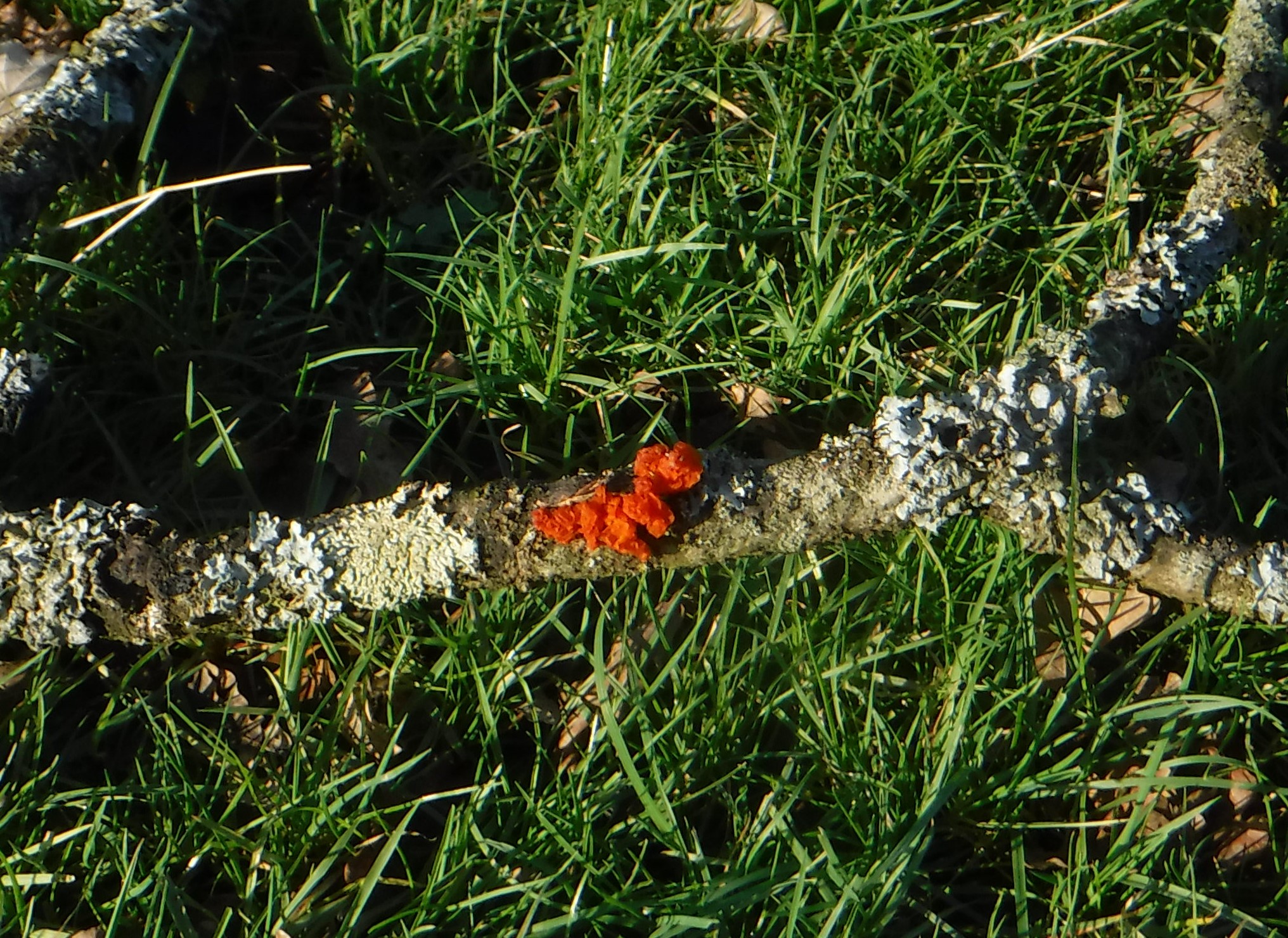
Total monthly rainfall : 117.5 millimetres. Maximum daily rainfall: 20.5 millimetres (16th February). During the month there were 20 days with measurable rainfall and 20 days with 100% cloud-cover for at least part of the day. This included three major storms consisting of 9 days with strong – to – gale- force winds. We have been recording rainfall now for 14 years, and only 2014 has been wetter. Maximum temperature on the warmest day was 14°C on 23rd February. Maximum temperature on the coldest day was 7°C on the 27th. There were 14 days when the temperature was 10°C or more. Although the month was generally mild, there were 8 days with a very strong wind-chill.
Three more wildflower species started to bloom this month, bringing our total to 10 for the year so far. We saw dog’s mercury on the 1st, groundsel on the 8th, and lesser celandine on the 14th.
Four more wild bird species this month brought our total to 35 species. On February 7th we found about 30 redwings in our wood, followed on the 9th by a cormorant on our small lake. On the 21st we found a collared dove at our garden feeding station, while on the 28th there were two greenfinches on our peanut feeder.
-
 Dogs mercury
Dogs mercury
Dogs mercury
Dogs mercury
-
 Lesser celandine
Lesser celandine
Lesser celandine
Lesser celandine
-
 Yellow brain fungus after rain
Yellow brain fungus after rain
Yellow brain fungus after rain
Yellow brain fungus after rain
-
 Yellow brain fungus before rain
Yellow brain fungus before rain
Yellow brain fungus before rain
Yellow brain fungus before rain
https://www.kentfieldclub.org.uk/news/little-barton-farm-wildlife-notes/nature-notes-february-2020#sigProIdb1eb79245a
We took a lot of interest in trees and shrubs this month. On the 14th our gorse bushes came into flower, having been unusually flower-less for over 2 months. On the 20th, as if by magic, we discovered the elder was in leaf, and buds were opening on some of our hazel, hawthorn, and hornbeam. Hazel was in leaf on the 23rd, and hawthorn by the 29th. Trees of all sizes had quite a torrid month, with twigs and branches of all sizes littering the woodland floor during the windy spells. Some even had yellow brain fungus growing on their bark. Other larger trees were either uprooted, damaging other trees on their way down, or snapped in half by the force of the wind.
Other first-sightings this month were a large dog fox, flushed out of the brambles by the family’s three dogs, but wily enough to evade them on February 5th, and a common toad, found beneath a reptile shelter on the 22nd. The hibernating 16-spot ladybirds, mentioned in previous months have halved in number during the month, and now only occupy 4 double-fence posts.
Finally, the combination of high rainfall and strong winds, mentioned earlier, has left the ground totally waterlogged. Ponds and drainage ditches are full. They are well aerated to the extent that water bubbles, feathers, and other floating debris has piled up along the shores of our ponds and against obstructions along ditches which are parallel to the wind direction at the time. We have, however, been extremely fortunate not to suffer the awful conditions of the many people flooded out of their homes in other parts of the country.

